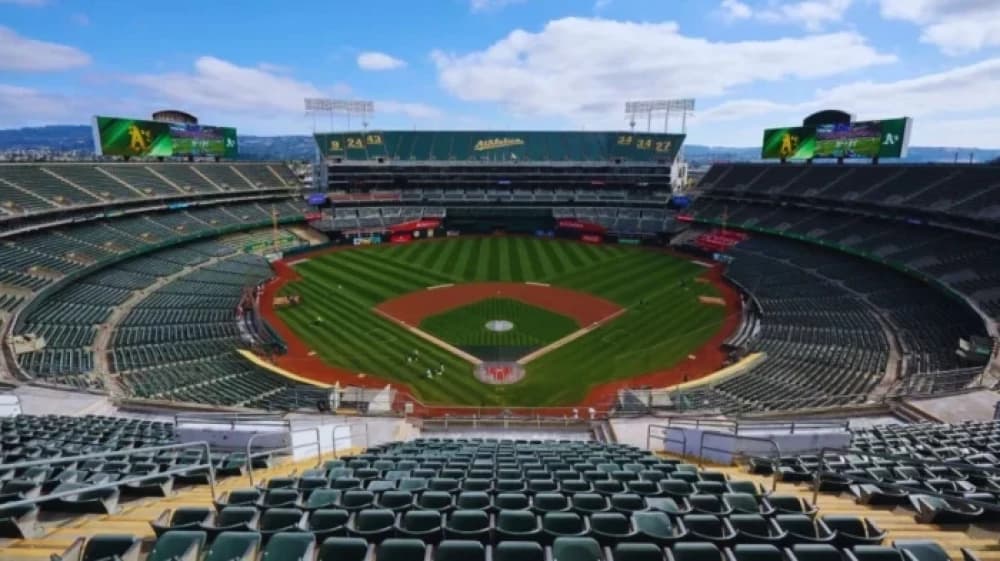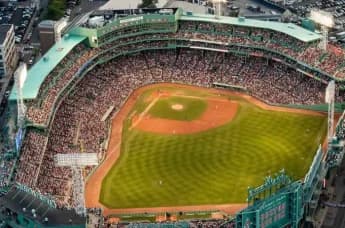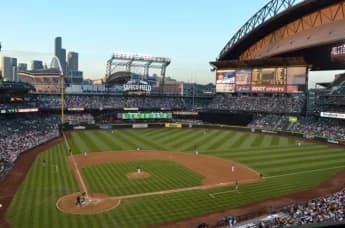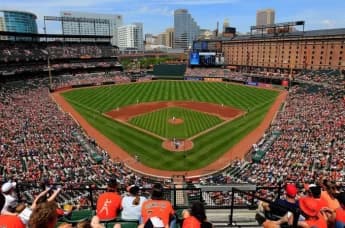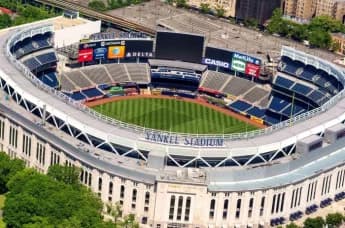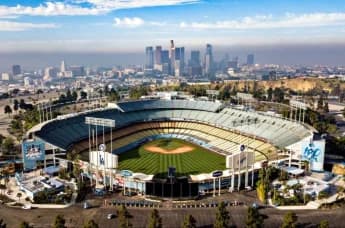From World Series Glory to Unforgettable Moments—Exploring the Heart of Oakland’s Sporting Heritage
The Oakland Coliseum, officially known as RingCentral Coliseum for sponsorship reasons, stands as a monument to baseball history, community pride, and the enduring spirit of Oakland, California. Since its opening in 1968, this iconic stadium has been the home of Major League Baseball’s Oakland Athletics, hosting legendary games, record-breaking performances, and unforgettable moments that have shaped the identity of the franchise and the city itself.
More than just a ballpark, the Coliseum has been a gathering place for generations of fans, a stage for athletic triumphs, and a symbol of resilience through changing times. Despite its aging infrastructure and ongoing debates about its future, the stadium remains a cherished landmark—a testament to the Athletics’ storied past and the passionate fanbase that continues to fill its seats.
This in-depth exploration delves into the Coliseum’s rich history, architectural uniqueness, electric game-day atmosphere, and the unforgettable events that have cemented its place in baseball lore.
History and Construction: The Birth of a Bay Area Landmark
Early Vision and Development (1960s)
In the 1960s, Oakland sought to establish itself as a major sports city. The dream of a multi-purpose stadium capable of hosting both baseball and football led to the planning of the Oakland Coliseum. Designed by architect Willis A. Frank and built by Kiewit-Pacific, the $25 million venue was envisioned as a modern, adaptable facility that could accommodate the Oakland Athletics (MLB) and the Oakland Raiders (NFL).
Grand Opening and Early Years (1968-1970s)
The Coliseum officially opened on September 18, 1968, with an Athletics game against the Cleveland Indians. Its dual-purpose design was revolutionary for the era, featuring a circular, bowl-like structure with expansive seating and a distinctive sloped roof.
The 1970s marked a golden era for the stadium, as the Athletics dominated baseball with three consecutive World Series titles (1972-1974), led by stars like Reggie Jackson and Catfish Hunter. Meanwhile, the Raiders brought football glory, winning Super Bowl XI in 1977. The Coliseum became synonymous with championship success, solidifying its place in Bay Area sports culture.
Renovations and Challenges (1980s-Present)
By the 1980s, the stadium began showing its age. Major renovations in the 1990s—including added luxury suites and seating adjustments—aimed to modernize the venue. However, as newer, baseball-only parks emerged, the Coliseum’s utilitarian design drew criticism for its lack of modern amenities.
The departure of the Raiders to Las Vegas in 2020 left the Athletics as the sole major tenant, reigniting debates about the stadium’s future. Despite talks of relocation or redevelopment, the Coliseum endures, a testament to its historical significance and the loyalty of Oakland fans.
Architectural and Design Features: A Stadium Like No Other
Brutalist Beauty and Functional Design
The Coliseum’s architecture reflects the brutalist style of the 1960s—bold, concrete-heavy, and utilitarian. Its massive pillars and imposing exterior give it a no-nonsense, industrial charm. The circular seating bowl ensures strong sightlines, while the iconic "A-frame" roof provides partial cover, shielding fans from the elements without sacrificing the open-air feel.
Multi-Purpose Adaptability
Originally designed for both baseball and football, the Coliseum’s field underwent numerous transformations. Movable bleachers and adjustable configurations allowed it to transition between sports seamlessly—a rarity in today’s era of specialized stadiums.
The "Mount Davis" Expansion
A significant change came in 1995 with the addition of "Mount Davis," a towering upper deck built to lure the Raiders back from Los Angeles. While it increased capacity, the structure obstructed the view of the Oakland hills and drew criticism for altering the stadium’s aesthetic.
Modern Upgrades and Nostalgic Charm
Despite its age, the Coliseum has seen updates: improved concessions, upgraded scoreboards, and enhanced fan areas. Yet, its old-school vibe remains—a throwback to an era when stadiums prioritized function over flash.
Atmosphere and Fan Experience: Where Passion Meets Tradition
The Coliseum Vibe
What the stadium lacks in modern luxuries, it makes up for in atmosphere. The Coliseum is known for its die-hard fans, who bring unmatched energy—especially during playoff runs. The right-field bleachers, dubbed the "Oakland Zoo," are a raucous hub of chants, drums, and unwavering support.
Tailgating Culture
Few ballparks rival the Coliseum’s tailgating scene. The sprawling parking lots transform into a sea of grills, games, and camaraderie before first pitch—a tradition that embodies the community spirit of A’s fans.
Intimacy and Nostalgia
Unlike newer parks with distracting amenities, the Coliseum keeps the focus on baseball. Fans sit close to the action, and the stadium’s history is palpable—from the echoes of Rickey Henderson’s stolen bases to the roar of the 1989 "Earthquake World Series."
Notable Events and Moments: A Stage for Legends
-
1972-1974 World Series Wins—The Athletics’ dynasty years, marked by Reggie Jackson’s heroics.
-
1989 "Bay Bridge Series" – The A’s swept the Giants in a World Series delayed by the Loma Prieta earthquake.
-
Dallas Braden’s Perfect Game (2010) – A hometown pitcher etched his name in history.
-
20-Game Winning Streak (2002) – Immortalized in Moneyball, a testament to underdog triumph.
-
Mark McGwire’s 500th Home Run (1999) – A milestone moment for the power-hitting icon.
Records and Legacy: Cementing Greatness
The Coliseum has been the backdrop for:
-
Team Records: Three World Series titles, multiple AL pennants, and legendary playoff runs.
-
Individual Feats: Perfect games, no-hitters, and historic home runs.
-
Cultural Impact: A symbol of Oakland’s resilience and blue-collar pride.
Visiting the Coliseum: A Fan’s Guide
-
Getting There: Easy access via BART (Bay Area Rapid Transit) and major highways.
-
Food & Drink: Local favorites like garlic fries and craft beers complement classic ballpark fare.
-
Must-See Spots: The Championship Plaza, commemorating the A’s titles, and the vibrant right-field bleachers.
Conclusion: A Stadium Worth Celebrating
The Oakland Coliseum may not be the newest or flashiest ballpark, but its soul is unmatched. It’s a place where history was made, where legends played, and where fans continue to rally behind their team against all odds. Whether its future involves renovation or replacement, the Coliseum’s legacy as a cornerstone of Oakland’s identity will endure.
For baseball purists and Athletics fans, a trip to the Coliseum isn’t just about a game—it’s a pilgrimage to the heart of the sport’s enduring spirit.
Final Thought: "The Coliseum isn’t just a stadium—it’s Oakland’s field of dreams, where every crack of the bat echoes with history."

